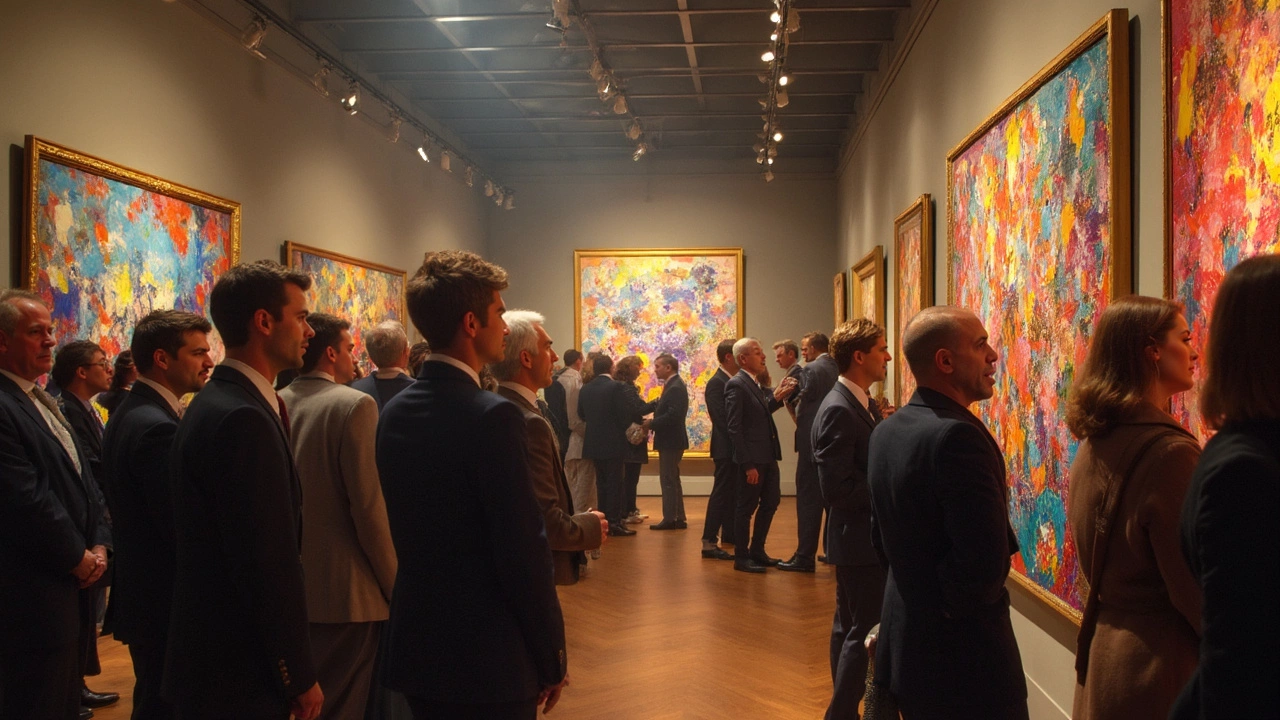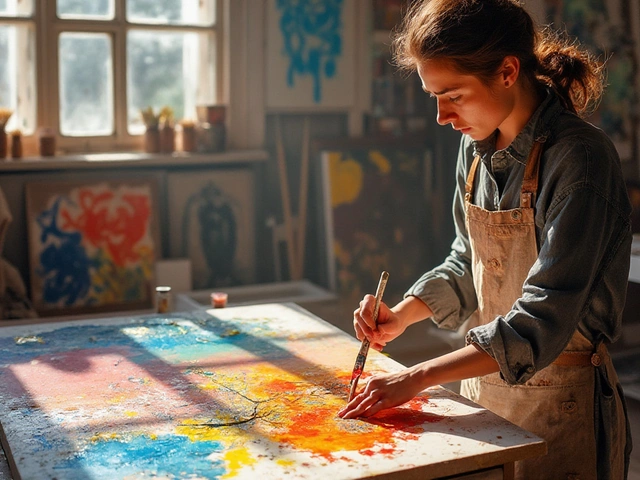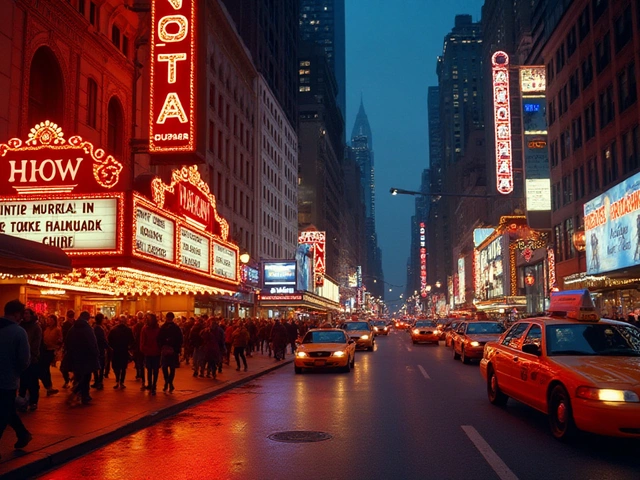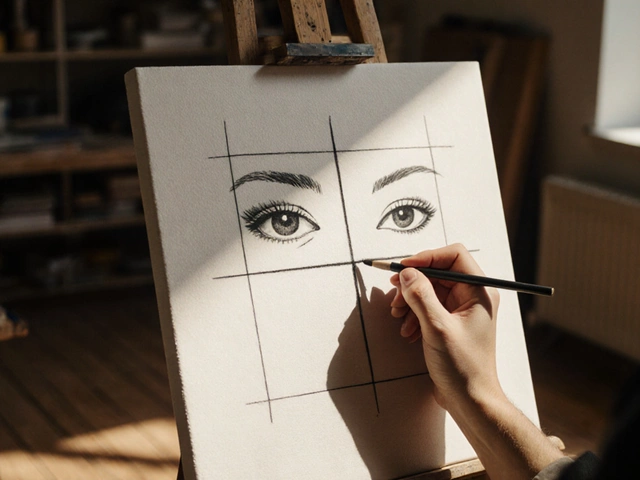Some folks scratch their heads at abstract art, wondering what all the fuss is about. It's not just about random splashes of paint or weird shapes. Abstract art takes us out of our comfort zones, shaking up how we see the world.
The thing is, abstract art doesn’t give us easy answers. We’re used to recognizing things and making quick judgments, but abstraction tosses that out of the window. This art form invites you to slow down and explore your feelings and thoughts. It doesn’t spoon-feed you a story; instead, it asks you to create one yourself.
- What Makes Abstract Art So Different?
- The Perception Challenge
- The Emotional Gap
- Embracing Subjectivity
- Tips for Apprehending Abstract Art
What Makes Abstract Art So Different?
Abstract art truly throws us a curveball in the world of visual arts. Unlike traditional art forms that rely on recognizable subjects, abstract art strips things down to their core elements — like color, line, and shape. This changes the way we engage with it.
Whereas a typical landscape or portrait gives us a subject or story immediately — say, a lady with a mysterious smile or a grand, scenic view — abstract art doesn't do that. It’s more like a puzzle waiting to be pieced together. This lack of a clear subject can make it intimidating at first glance.
Breaking the Formal Rules
Artists like Wassily Kandinsky and Piet Mondrian were some of the first to break away from traditional art constraints, paving the way for modern abstract paintings. They focused on expressing emotions and ideas without relying on the visual cues we’re used to. This was revolutionary back in the early 20th century and still is today.
By playing with colors and shapes, abstract artists challenge viewers to open their minds. Instead of telling you what to think or see, it invites you to interpret it yourself. There's no right or wrong answer when it comes to these artworks.
The Influence of Culture and Era
Interestingly enough, abstract art has been influenced by various cultures and historical periods. For instance, the chaotic energy of a Jackson Pollock painting might reflect the societal tensions of his time. On the other hand, the serene compositions of Mark Rothko aim to evoke calmness and contemplation amidst the noise of the modern world.
Because abstract art defies clear-cut interpretations, it makes us work a little harder to understand it. But that's also what makes it fun and liberating — it encourages you to see beyond what's right in front of your eyes and dive into a world of possibilities.
The Perception Challenge
Ever stand in front of an abstract painting and think, "What am I even looking at?" You're not alone. Abstract art is tricky because it messes with how we usually perceive things. Our brains love patterns and clear shapes, but when those are missing, it can feel like trying to solve a puzzle without all the pieces.
Our minds are wired to recognize faces, objects, and landscapes—things with obvious features. Abstract art flips the script by ditching those familiar forms, leaving us grappling to make sense of splashes and swirls. It's like trying to understand a language you've never heard before. No wonder it can feel overwhelming!
The key here is understanding that abstract art is more about feelings than facts. It wants you to react, to consider your perception, rather than just observing what's clearly there. A study by the University of Toronto even found that people who embraced ambiguity tended to appreciate abstract art more. So, if you can let go of the need for clear-cut answers, you might find yourself enjoying it more.
Embrace the Unknown
It might seem tough to appreciate something you can’t immediately identify, but abstract art isn't about deciphering hidden codes. It's an invitation to explore your own interpretations. Different colors and shapes might stir up certain emotions or memories for each person, making your experience unique.
Next time you’re at an art gallery, try this: instead of asking "What is this supposed to be," think about "What is this making me feel?" You might be surprised at what pops into your head!
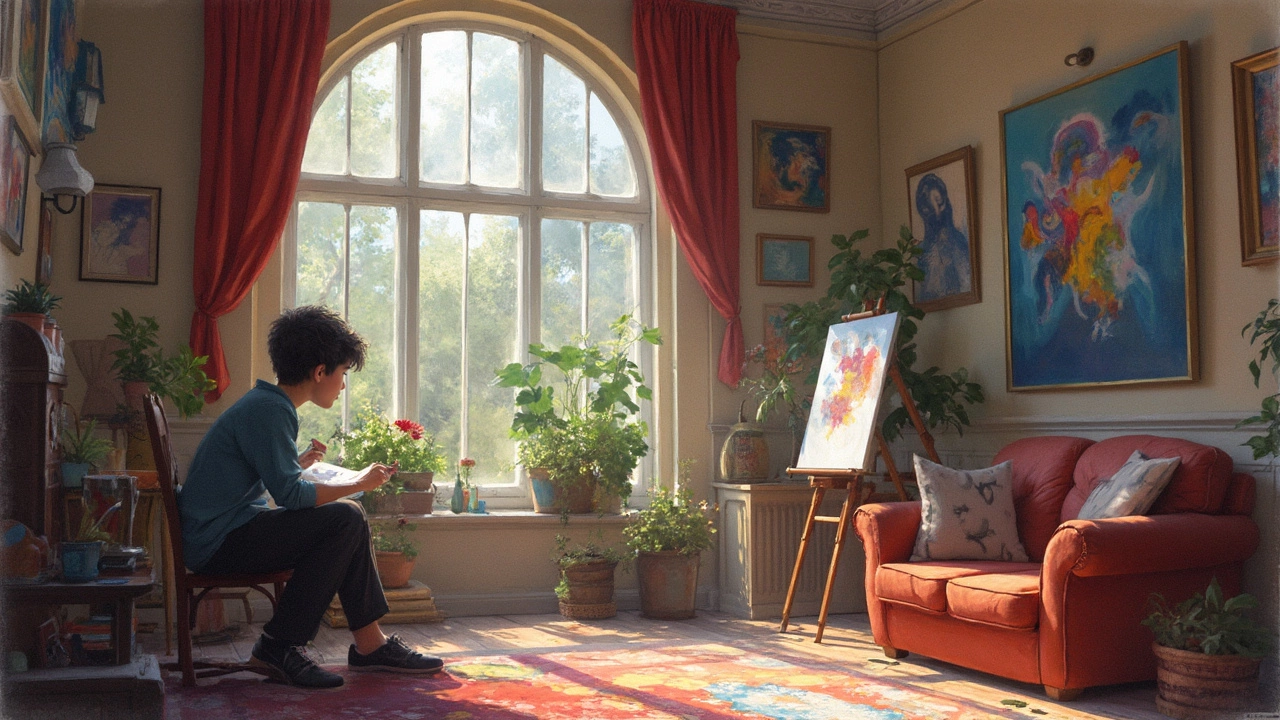
The Emotional Gap
So, what's the deal with the emotional gap when it comes to abstract art? Well, it's like trying to feel something for a painting that doesn't offer clear emotions or narratives to latch on to. Unlike a traditional portrait or landscape, abstract art isn't about what you see on the surface. It's more about the emotions it stirs inside you, which can be a tough sell for many.
One big reason people struggle is that abstract paintings often bypass logical interpretation. We're wired to look for patterns and stories, but these aren't always obvious in abstraction. Imagine looking at a Jackson Pollock piece, with its explosive energy and chaotic drips - it can be overwhelming, right? It doesn’t hand over an emotional roadmap, leaving us to fend for ourselves.
Connecting Emotionally
Here's a thought: maybe abstract art requires a different approach. Think of it as a conversation rather than a lecture. It’s like meeting someone who speaks in riddles – you have to engage more deeply. The perception of art can be incredibly personal, influenced by your mood, background, and experiences at that moment.
Studies have shown that openness to experience can enhance one’s appreciation for abstract art. This doesn’t mean you need a degree in art history; rather, being open to new ideas and perspectives can bridge that emotional gap. Try to relax, let go of preconceived notions, and see where the art takes you.
Overcome the Gap
- Spend more time with the artwork. Quick glances won’t cut it; instead, observe the details, colors, and textures.
- Acknowledge your emotional response. It can be anything from confusion to serenity - both are valid.
- Engage with art communities or discussions. Sometimes hearing others' interpretations can spark new understanding.
- Consider the artist's intent. Knowing a bit about the artist's background or the era might provide clues to their emotional intentions.
The beauty of abstract art is its ability to mean different things to different people. Embrace the ambiguity, and who knows, you might find yourself on an unexpected emotional journey.
Embracing Subjectivity
Why is it some folks stand mesmerized by a abstract painting while others shrug and walk away? It all comes down to something we've all got: subjectivity. When there's no polite guidebook explaining a piece's true meaning, interpretations can vary widely. That's not a bug; it's a feature.
Abstract art is like a mirror reflecting each viewer's thoughts, experiences, and feelings. It challenges us to accept that our perspective is just one of many. The same piece might stir nostalgia in you but look like a mess of color to your friend. And that's the beauty of it.
The Freedom of Interpretation
In the realm of abstract art, there's freedom in interpretation. No need to hunt for hidden meanings or critiques. Your experience, your feelings, your gut reactions—those are all valid. Try this next time you see an abstract piece: pause for a moment, think about what it makes you feel. Avoid the urge to label it as "good" or "bad." Sometimes, there isn't a deeper meaning to unearth. Sometimes, it's just about soaking in the moment.
Letting Go of Rules
We're taught to admire art through certain lenses, be it historical context or technical skill. Abstract art flips that on its head. Rather than dissecting its components with a theoretical scalpel, try stepping back, letting go of the need to 'get it.' Sometimes you might need to turn off that critical bit of your brain, and just let yourself see.
For those who find it uncomfortable, remember, there's no wrong way to engage with abstract art. It's all about embracing different responses. Walk into a gallery with an open mind, and let each piece speak to you, even if it's through whispers you're trying to decipher.

Tips for Apprehending Abstract Art
So, how do you get a grip on abstract art, especially if it's all new and baffling to you? Here are some practical tips to make your experience less of a head-scratcher.
Slow Down and Observe
When you walk into a gallery or see a piece online, don’t rush past. Take a moment and just stand there looking. Notice the colors, shapes, and forms. Ask yourself how these elements make you feel, without worrying if your feelings are right or wrong.
Open Your Mind
Approach each painting with an open mind. Forget what art “should be” and accept what it is. Abstract art is all about freeing yourself from expectations.
Feel the Emotions
What emotions does the piece stir in you? Artists often use colors and forms to express feelings or moods. For instance, deep reds might convey passion or anger, while blues often bring a sense of calm or sadness. Your reaction might reveal more about you than the artwork itself.
Learn About the Artist
Understanding the context or background of the artist can make a big difference. Why did they choose such bold visual perception? Knowing about their life or what influenced their work can provide insights you might miss otherwise.
Ask Questions
- What thoughts run through your head when you see it?
- Do the colors remind you of something?
- Does it spark any personal memories?
Asking these questions can help you connect with the piece on a personal level.
Engage with Others
Discuss the art with others, even if it's just a friend or fellow gallery-goer. Different perspectives can open your eyes to aspects you hadn’t considered. You might even find common ground or learn something new.
Remember, appreciating abstract art doesn’t require an art degree. It asks for patience, openness, and a willingness to let down your guard. So next time you see a wild splash of paint in a frame, give it a chance to speak to you.
